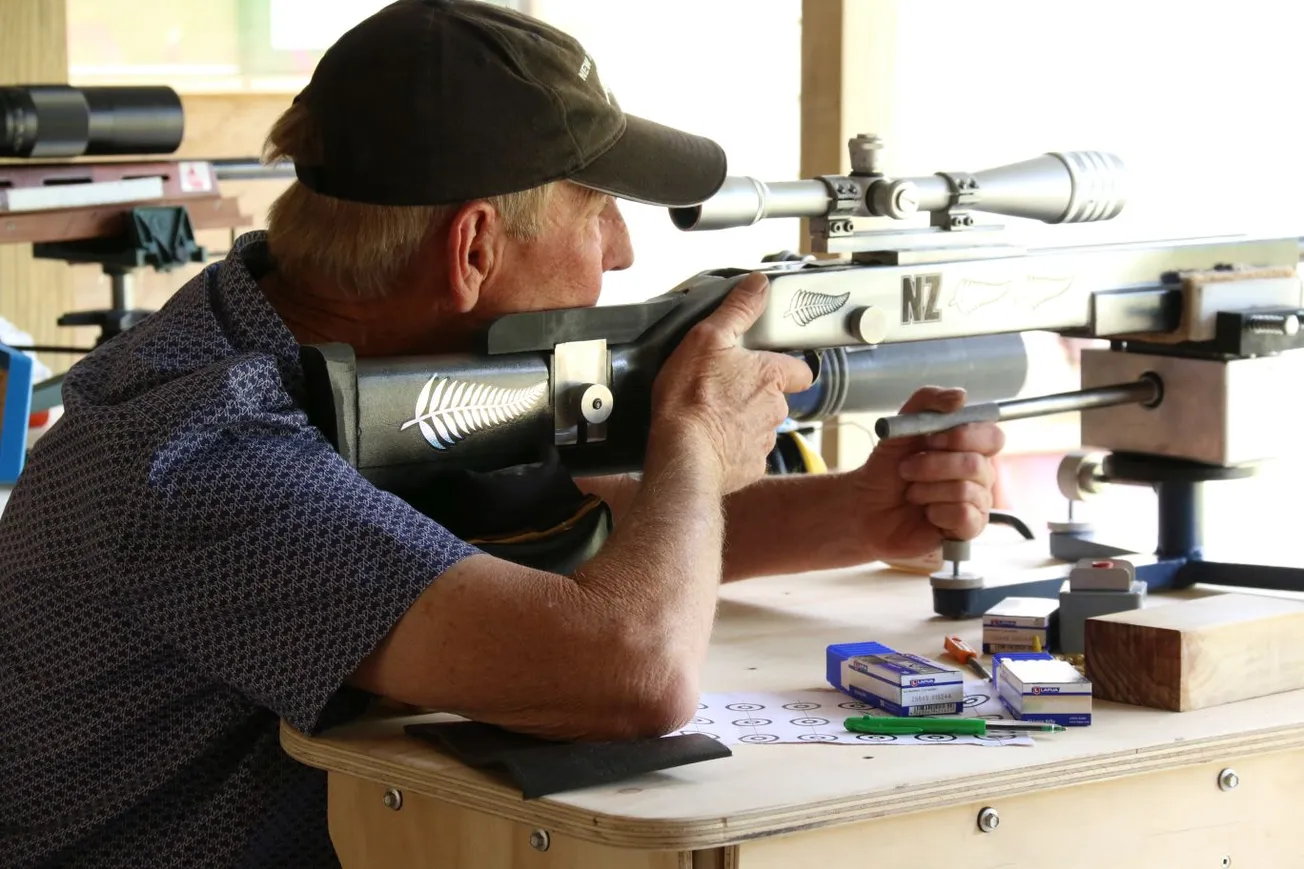OAP
It looks simple, a bunch of mostly elderly people sitting at tables with their rifles supported front and rear blasting away at a target at the end of a long hall.
They are mostly those, like me, who are finding it difficult to lie down to shoot off their elbows and get up again, who have gear that they are reluctant to sell or give away and still want to use. So while a mediocre result shot while lying down is partly acceptable, the urge for perfection is still there.
While benchrest shooting outdoors with a centre fire rifle has been popular since before the middle of last century, smallbore indoors has only recently evolved.
A few areas around the country have toyed with it but there was no move to standardise rules, rifle classes and targets so competitions could take place nationally.
Our group, which I was instrumental in setting up, was pushing for uniformity in the way the sport was confirmed and, when our new range was built, had two bullet catchers set up, and the other prime mover, who had been involved in fullbore for very many years, built four concrete benches to recognised specs for our use.
He and I worked on the local association to fit benchrest into the competition schedule and this needed agreement on the form of rifles, targets and rules. We, mostly he with his experience in the sport, came up with a detailed set of rules. These were based on the English format rather than the Australian one. These were accepted and referred last year to the National Exec as a discussion document.
National Exec agreed in principle but wanted a wider input to the proposal so a working committee under his chairmanship was set up to come up with a proposal to put to this year’s National AGM in October. As the majority of the members are prone shooters, they have little interest in the detail so we are hopeful the Rules, which have been integrated into the National Rule Book will be accepted with little discussion.
The details of targets for both in and out doors have been given and we have used them for the current local competition.
There are basically two classes of rifle accepted for competition although I proposed three. The light weight sporter and the heavy prone rifle. Scope power is unlimited but the minimum for practical purposes is 24x. I have supplied several 10-40x to members, others use fixed power around that and I use a 12-60x. It is handy to alter the power to suit the type of target – what power is needed for the dot to cover the centre of the bull.
It was my intention to separate the class into two — production and unlimited — the production simply being a prone rifle with the sights replaced with a scope and no further add ons. However, this was scrapped and now big money is involved. There are performance barrel tuning devices available for a price. The original barrel can be replaced, stocks can be modified and triggers lightened but not substituted.
The results can be seen. The top three places were won by modified rifles recently where I shoot.
A great part of accuracy comes from the selection of ammunition and tuning the rifles to it. In general, the more expensive the ammo, the better you can tune the rifle. The top shooters used top ammo and I managed to tune mine to about 98% of capability with a good less expensive brand which seems to suit many of the rifles in use. However, every brand will throw a wild one eventually. Another factor is ambient temperature and I have proved that cold affects the rifle’s ability to group consistently. We are only talking about a couple of millimetres but that is enough to lose an inner, and benchrest comps are won in inners.
There are many factors that influence accuracy and I haven’t even mentioned the human element. I will write another article if reader interest justifies it.
If you enjoyed this BFD article please share it.









